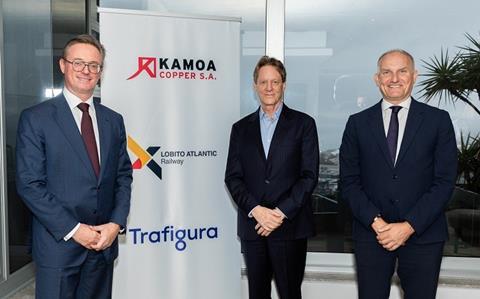
ANGOLA: Trafigura and Kamoa-Kakula have signed long-term commitments to use the Lobito Atlantic Railway between the Copperbelt region of DR Congo and Zambia and the Angolan deep-water port of Lobito.
In 2022 the Lobito Atlantic Railway consortium of Trafigura, Mota-Engil and Belgian rail operator Vecturis was awarded a 30-year concession to manage the 1 344 km line which connects with the Société Nationale des Chemins de Fer du Congo network at the DR Congo border.
The concession began in July 2023. The 1 067 mm gauge line is now being upgraded in a US$500m project supported by the governments of Angola, DR Congo and Zambia and the US International Development Finance Corp, which is providing US$250m.
This aims to provide a more efficient and lower-carbon route to market for metals including copper and cobalt. The line operates on the basis of open commercial access, and is expected reach an annual export capacity of 1 million tonnes/year before the end of the decade.
The reserved capacity agreements signed on February 7 run for a minimum term of six years.
Trafigura has been allocated capacity of up to 450 000 tonnes/year from 2025. The Kamoa-Kakula copper joint venture of Ivanhoe Mines and Zijin Mining has been allocated a minimum of 120 000 tonnes/year and up to 240 000 tonnes/year from 2025, with an initial commitment of 10 000 tonnes in 2024.

These commitments ‘support the consortium’s aim to grow the volumes on the corridor so that it becomes the leading rail transport link in sub-Saharan Africa’, said Jeremy Weir, Executive Chairman & CEO of Trafigura.
Ivanhoe Mines Executive Co-Chairman Robert Friedland said the corridor ‘is fast becoming one of the most important trade routes for vital copper metal in the world’.
He said ‘cheaper logistics increase the amount of economically recoverable copper across the Copperbelt, as cut-off grades can be lowered. This would have a ’significant impact’ on discoveries in DR Congo, including high-grade copper at Kitoko 30 km from the existing railway.

















